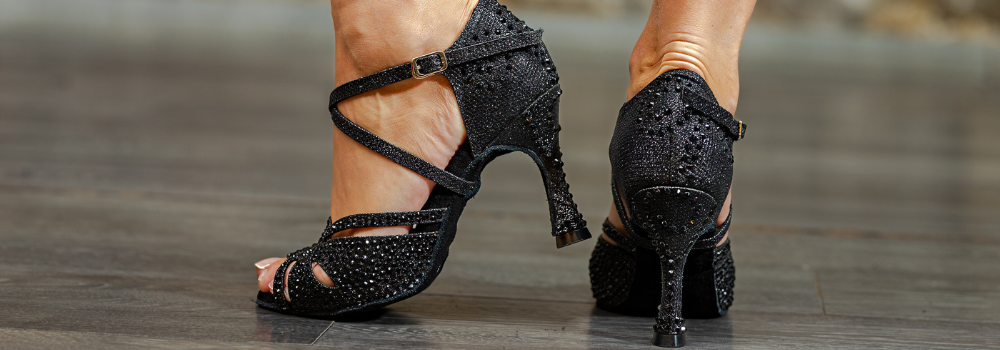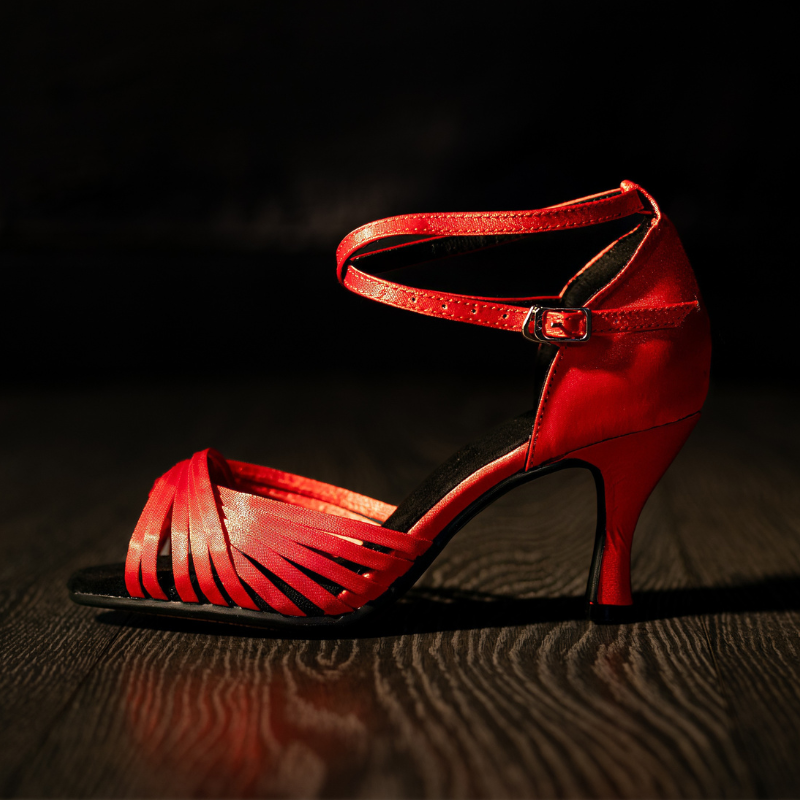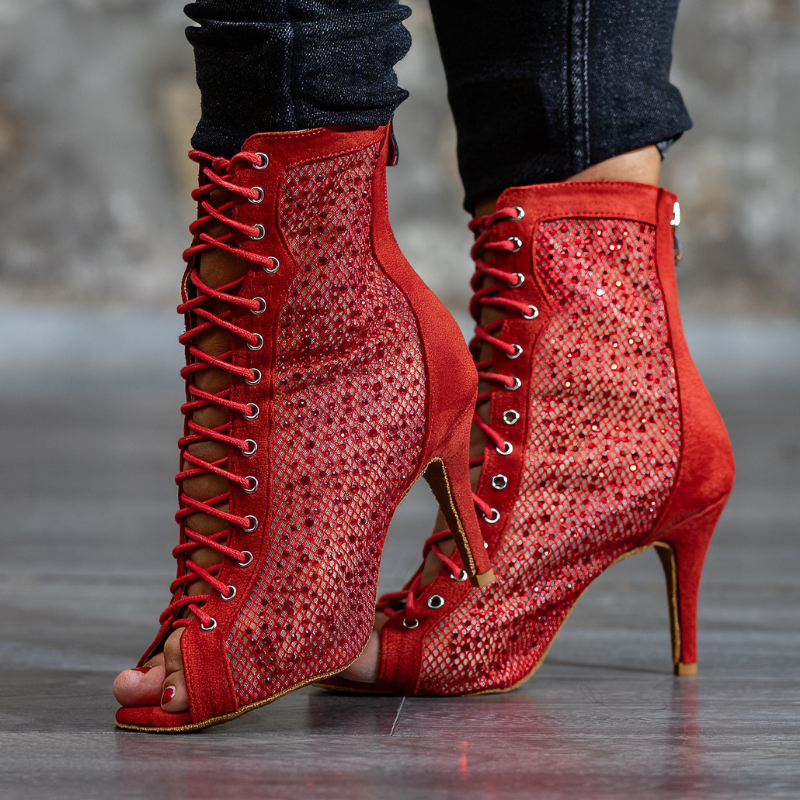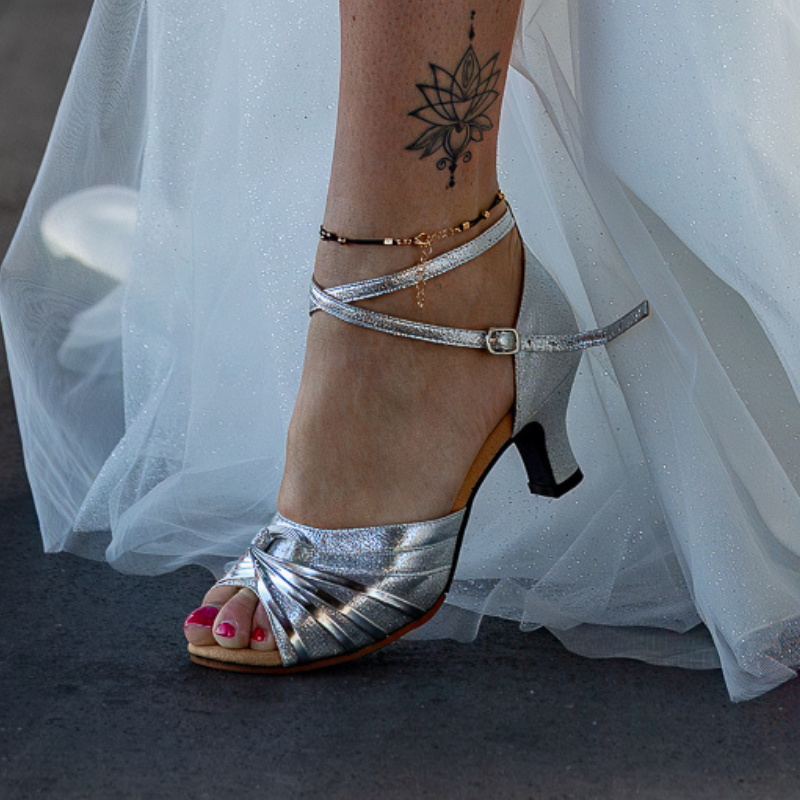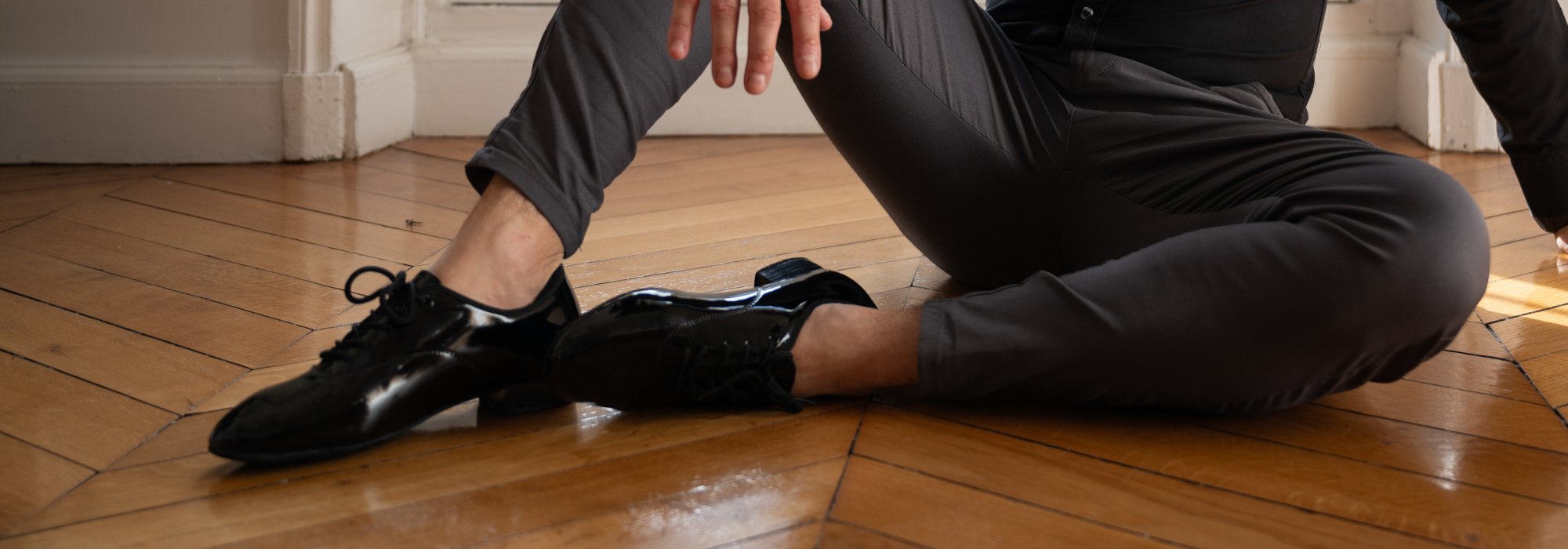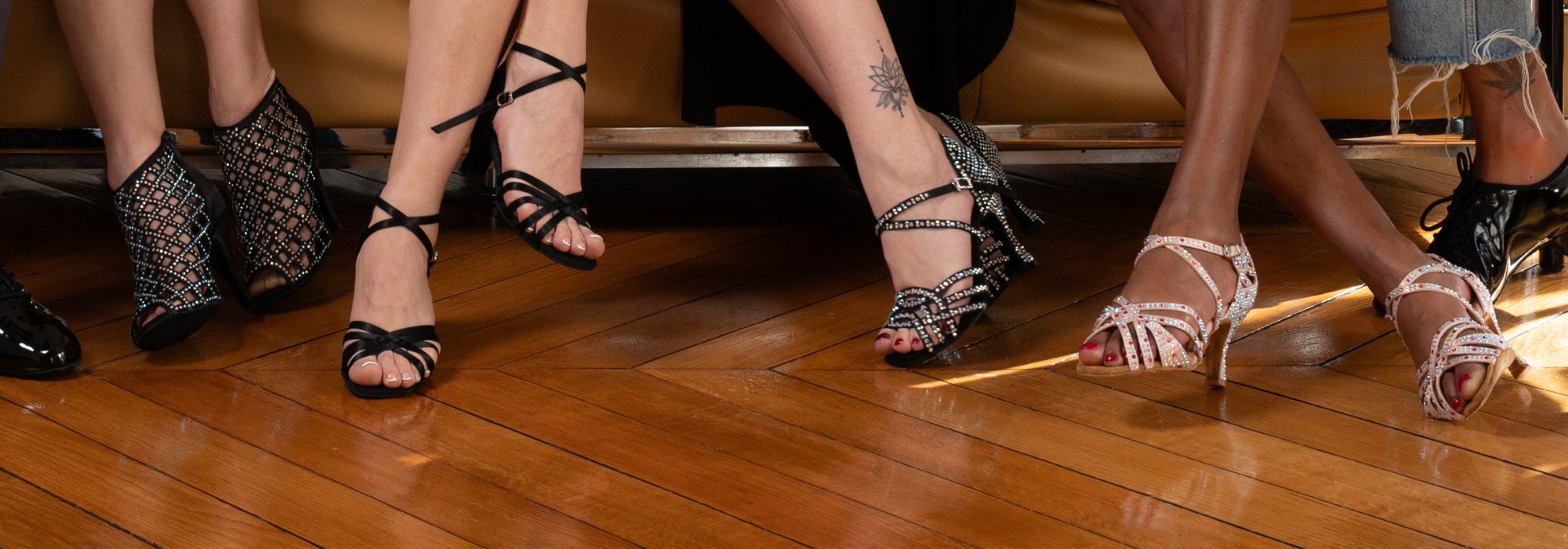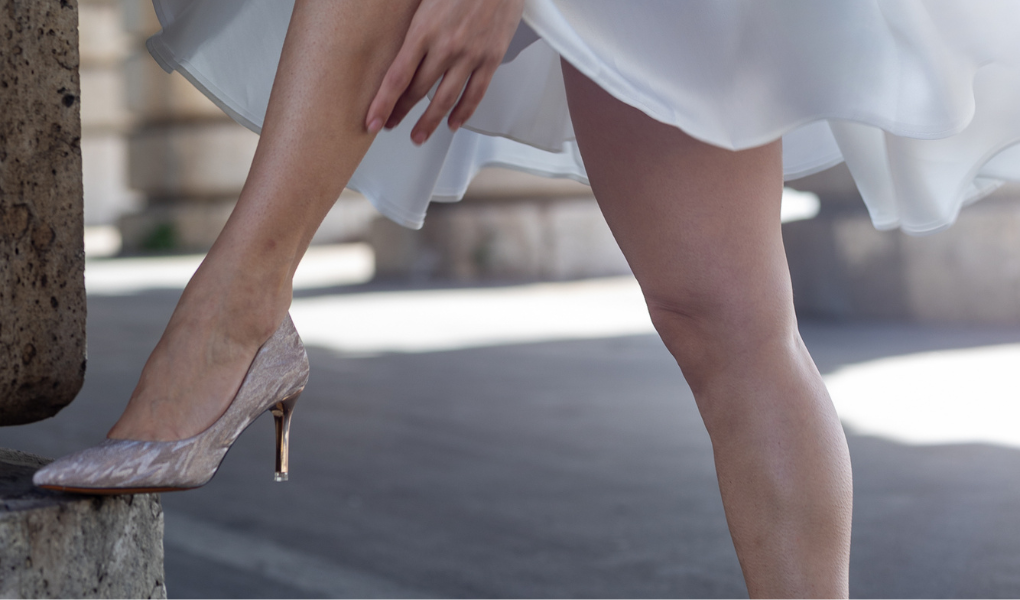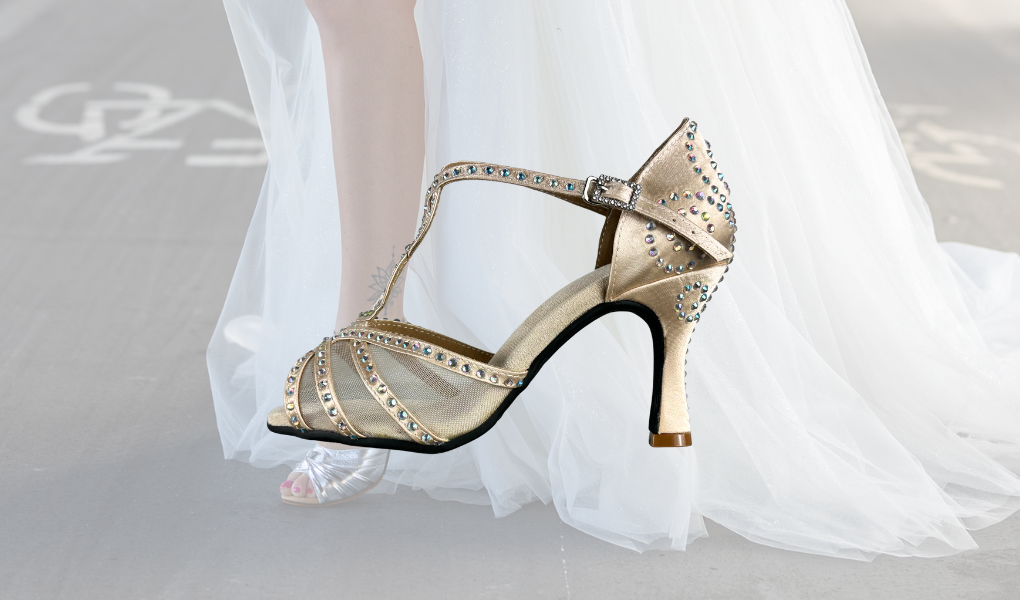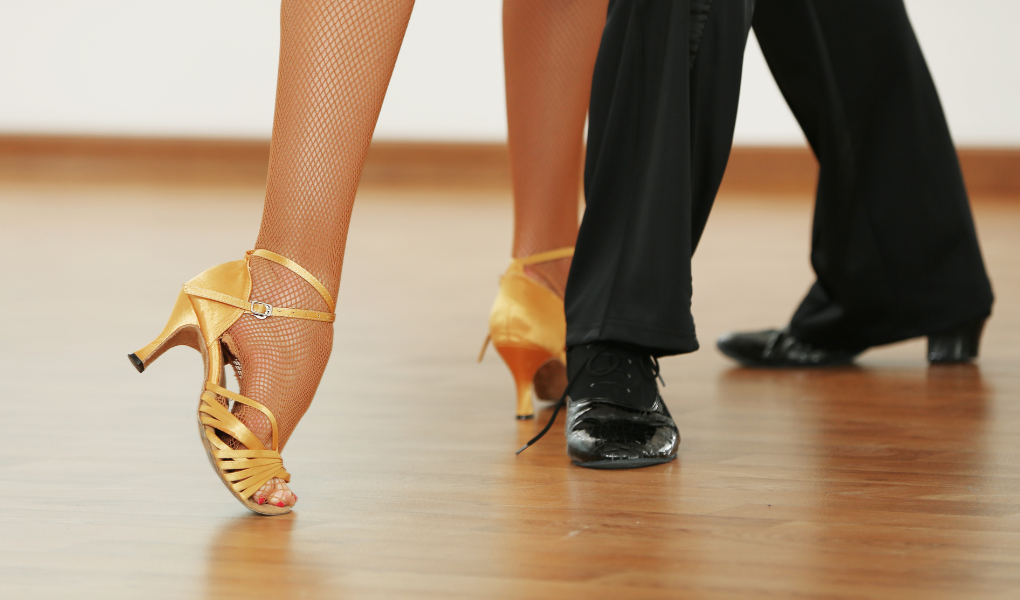What is the best heel height to dance?
Do you dream of spinning on the track, of expressing your personality through each step, but a question remains: what height of heel dance to choose to combine elegance, comfort and mastery? The choice of heel, far from being a detail, influences your stability, your sensations and even your progression. Between the glamor of high heels and the stakes of pain or safety, it is sometimes difficult to find the balance. Whether you are a beginner or confirmed dancer, let's see together how to find the ideal height that will make each dance moment pure pleasure. Ready to put on your best version on the track?
Why is the heel height crucial in dance?
The impact of the heel dance on your balance
The dance heel acts like an anchor point: it shapes the axis of your body, influences your anchoring on the ground and modulates the quality of your trips. An adapted height allows you to be stable during laps, dare weight games and let go without fear. Conversely, a poorly chosen heel disturbs your center of gravity and can transform each displacement into a challenge.
- A too high heel engages the calves and imbalance the basin
- A too low heel removes dynamics and momentum
Flexibility and aesthetic: the art of combining both
A pretty heel lengthens the leg, sublimates the silhouette and brings this suspicion of sensuality dear to salsa or bachata. But, aesthetics should never take precedence over safety: the best height is the one that allows you to dance for a long time, painless, with grace and energy.
Recommended height differences according to dance styles

Salsa and heel dance: the balance of charisma
In salsa, the movements are fast, the tempo changing. Here, the majority of dancers opt for heels between 6 and 8.5 cm. This allows nervousness, elongated lines and strong connection to the ground. The dancers will favor a low heel (2 to 3 cm) to keep stability and comfort.
- Beginner: 5 to 6 cm
- Intermediate level: 6.5 to 7.5 cm
- Advanced/Expert: up to 8.5 cm
Bachata and Heels: sensuality versus stability
In bachata or in Heels' lessons, the temptation of a high heel is large. However, even to amplify sensuality, a too high heel complicates the correct execution of ripples and pivots. For this discipline, an average heel (6 to 7.5 cm) is an effective ally.
What are the advantages of high heels in dance?

A magnified look, elongated lines
The high heel extends the leg, refines the silhouette and accentuates the back of the back. By raising yourself to the stars, he offers you a posture worthy of the largest stars of the Latin scenes. You win instantly in presence and elegance.
- Glamor look and reinforced insurance
- Highlighting
Increase the difficulty ... to better progress
Working with a heel higher challenge your balance, improves your proprioception and requires better bodily precision. Gradually train, you will feel your level climb with the height.
Risks and pains: why you have to stay vigilant
Tendinitis, twists and fatigue
The excessive wearing of the high heels is a great deal of the ankles, calves and backs. Bad alignment can cause pain, sprains, even injuries. With each rehearsal, listen to your body: no talent deserves a career shortened by bad shoes.
- Favor the warm -up and strengthening of ankles
- Vary the heights during rehearsals
- Remember to alternate with flat shoes during breaks
Alert signals never to ignore
If you feel tingling, cramps or recurring pain, it is not normal. A suitable dance heel must offer freedom and pleasure, never persistent embarrassment.
Beginners? Here's how to choose your first dance heel

Stability, above all!
For your first steps, the watchword is stability. Opt for a heel between 5 and 6.5 cm, stable, wide (Cuban or "flare" type) and adjusted fit. This will allow you to focus on stress -free technique, learn to dissociate support and gain insurance.
- Fine heels to avoid at first
- Adjusted shoes but not too tight
The importance of an adapted sole
Choose a suede or nubuck sole, flexible and which slides enough to allow the pivots, but brakes enough to avoid falls. Comfort, your ally to progress quickly!
When and how to increase the heel height without pain?
Progressiveness and body listening
Agen the height in levels of 0.5 to 1 cm. Test several sessions in real conditions before adopting a new model. If you go from 6 to 8 cm, take the time to integrate the different sensations during the warm -up, and adjust your technique if necessary.
Gradual exercise in your safety service
Performs the balance exercises, warm each joint, including ankles and feet. Go home first, dares to make small laps, then attacks the choreographies. Each height reached is a new victory on the track!
Heel, width, shape: the whole makes the difference
The crucial role of the dancing heel base
Height is not the only criterion. A large heel offers security, while a classic stiletto requires greater technicality. The flare form (flared) ensures both thanks and seated, and is perfectly suited to the dancers wishing to combine elegance and stability.
Foot widths and adjustment: comfort above all
Take the time to try every model. Dancers with wide feet will favor shoes with more volume at the front. Do not forget that a dance shoe should be more adjusted than a city shoe because it relaxes with the heat of the foot.
Personalization and fitting: the Salsanueva experience Shop
Expert tips to find your ideal shoe
At Salsanueva Shop, We know that each morphology and each course are unique. Need a tailor-made pair? In store or online, take advantage of our fitting guide to find the perfect shoe. To go further, discover our Selection of women's dance shoes And request advice from our team of enthusiasts.
The importance of trying in real conditions
Put yourself in rehearsal clothes. Test the shoes on different types of soil, performs several complete laps and works the dynamic supports. Listen to yourself, the good heel of heel dance is the one that enhances your feeling, not just your style.
Our favorite recommendations of the moment
Stars models to start and progress
- Classic satin : perfect balance between comfort and style for beginners
- Crossed satin: Reinforced insurance to progress safely
- High satin For the scene: to be reserved for intermediaries/advances in search of glamor
Errors to avoid in the choice of your dance heel
- Choosing a heel too high under the pretext of aesthetics, to the detriment of stability
- Neglect the importance of maintaining (well -adjusted strips, good fit)
- Forget to test before purchase
FAQ - Frequent questions
What heel height is recommended for a beginner dancer?
For a beginner, a height between 5 and 6.5 cm is ideal to ensure stability, comfort and confidence during the first learning.
Can we dance salsa with very high heels?
Yes, but you have to be experienced because the very high heels increase the risk of losing balance. Most dancers choose heels between 7 and 8.5 cm, but it is better to progress gradually.
How to avoid pain in dancing with heels?
Opt for a shoe adapted to the shape of your foot, take the time to take breaks, warm up before each session, and choose a lined and flexible sole.
What difference between a flare heel and a Stiletto heel for dance?
A flare heel (flared) offers a better base on the ground and therefore more security, while the stiletto (end) lengthens the leg but requires more control.
Is it important to try your dance shoes before buying?
Yes, it is essential to try to check comfort, adjustment and stability. The ideal is to test the pair in real dance conditions before deciding.
Do men also have to wear heels to dance?
Yes, but they are generally lower (2 to 4 cm), to optimize the support and position of the foot, without harming the essential stability during travel.
Can we personalize the tailor-made heel height at Salsanueva Shop ?
Yes, Salsanueva Shop offers customizable models to adapt to each morphology and specific need. Do not hesitate to contact us for personalized advice.
Discover our Dance heel models available On our online store Salsanueva Shop, Thoughts for demanding dancers.

